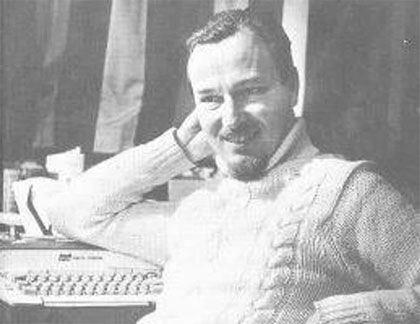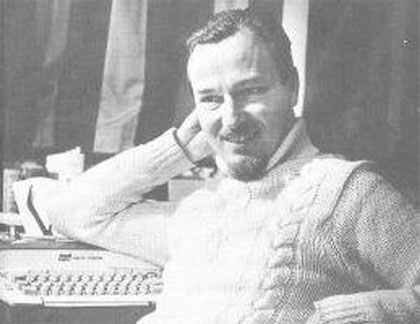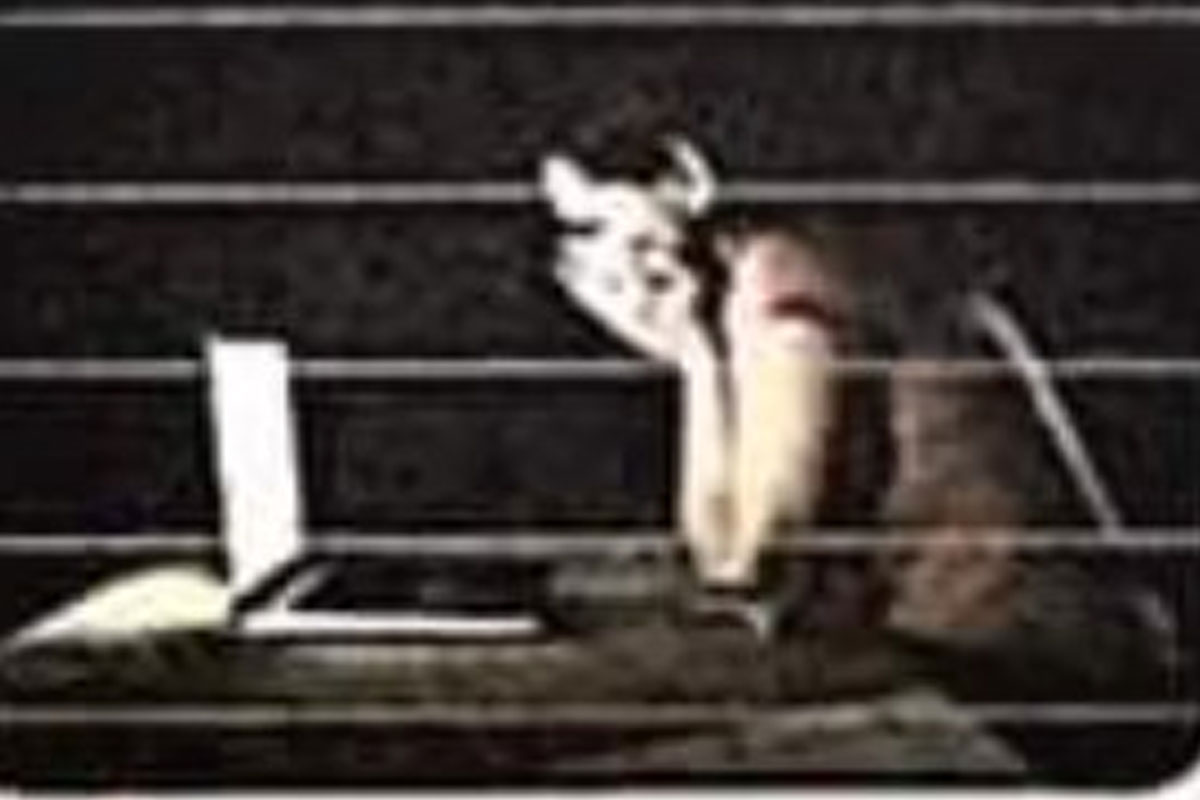
The Weirdest Ideas In History That Somehow Came True
Jesse Childs
The outlandish ideas of one era can eventually become predictions that come true at a later date. Something that was seen as unfathomable, implausible, or even ludicrous at one point can end up as a part of everyday life over the years. Inventors, scientists, and writers of yesterday have weirdly predicted things that people laughed at in their time – only for their predictions to become standard, if not indispensable, for later generations.
History has a funny way of proving the most practical of humans wrong and those deemed as lunatics right. The thought of a spherical Earth must have made the flat-Earthers laugh when the ancient Egyptians and Greeks proposed it. The limits of logic are far more rigid than those of the imagination. Everything from organ transplants to Wi-Fi were once considered eccentric ideas that turned into an impressive historical prediction.
It took individuals bold enough to look crazy in their own time for us to enjoy innovative things in ours.
________________________________________
• Photo: Garry Buckton / Wikipedia / Fair Use
 Electric Cars
Electric Cars
In 1969, author John Brunner published the sci-fi novel Stand on Zanzibar. In it, he describes the United States of America in the year 2010. One of the details in Brunner’s story is that electric cars manufactured by Honda and others have become the preferred mode of transportation for most people.
In the real world, hybrid and electric cars were becoming a thing by 2010. Honda was producing cars with electric technology that year, though less successfully than their fellow Japanese competitor Toyota.
Electric cars are not the only thing predicted by Brunner. He envisioned a future involving rampant inflation, terrorist attacks on US soil, and Detroit techno. He also predicted a more open culture concerning sexual orientation. One of the more uncanny predictions made in Stand on Zanzibar is a President Obomi running the country. The spelling is so close to President Obama it’s hard to ignore.
• • Photo: Charles Jervas / Wikimedia Commons / Public Domain
The Moons Of Mars
Jonathan Swift’s classic Gulliver’s Travels is a well-known story about miniature people and giants. But many don’t know the author’s work managed to predict that Mars has two moons 151 years before Asaph Hall discovered them.
The passage from the book that describes the two heavenly bodies – since named Phobos and Deimos – occurs when the titular character visits an island populated by insane scientists. Swift writes:
They have likewise discovered two lesser stars, or satellites, which revolve around Mars, whereof the innermost is distant from the center of the primary exactly three of his diameters, and the outermost five: the former revolves in the space of ten hours, and the latter in twenty-one and a half.
Sometimes, art really is a reflection of reality. Swift’s prediction earned him the honor of having a crater named after him on the moon Deimos.
• • Photo: Unknown / Wikimedia Commons / Public Domain
Wi-Fi Technology
The electric car company Tesla, co-founded by Elon Musk, is named in honor of inventor Nikola Tesla and his numerous and indispensable out-of-this-world ideas. In addition to discovering the superiority of electricity’s alternating current (to his rival Thomas Edison’s direct current), Tesla predicted Wi-Fi and the devices that would use this technology.
Tesla pitched the idea to JP Morgan and secured funding for it back in 1901, stating:
As soon as completed, it will be possible for a businessman in New York to dictate instructions, and have them instantly appear in type at his office in London or elsewhere. He will be able to call up, from his desk, and talk to any telephone subscriber on the globe, without any change whatsoever in the existing equipment.
An inexpensive instrument, not bigger than a watch, will enable its bearer to hear anywhere, on sea or land, music or song, the speech of a political leader, the address of an eminent man of science, or the sermon of an eloquent clergyman, delivered in some other place, however distant. In the same manner, any picture, character, drawing, or print can be transferred from one to another place. Millions of such instruments can be operated from but one plant of this kind.
Tesla was pretty much right about every prediction he made. So why didn’t we have Wi-Fi and smartphones at the beginning of the 1900s? While constructing his Wi-Fi station in Long Island (known as Wardenclyffe Tower), he was in fierce competition with Italian inventor Guglielmo Marconi to send wireless telegraphs around the world. As Marconi’s radio-wave based system gained traction, Tesla’s plan began to fall behind – so he decided to up the ante. He wanted to use his invention to not only send wireless telegraphs, but to modify it so he could harvest electricity from the air and send it to homes without cables.
When Tesla pitched the idea to Morgan, the robber baron replied, “If anyone can draw on the power, where do we put the meter?” Long story short, Morgan declined to fund Tesla any further, the industry adopted Marconi’s invention, Marconi won a Nobel prize, and Tesla became the laughingstock of his peers.
• • Photo: Johann Kerseboom / Wikimedia Commons / Public Domain
Bulletproof Body Armor
Robert Boyle was such a prolific scientist that he has an actual scientific law named after him. That’s impressive enough, but Boyle also had a list of ideas he wrote sometime around the 1660s that predicted several things that would come to be centuries later.
Upon his death in 1691, this now-famous wishlist was discovered among Boyle’s papers. A mention of “making armor light and extremely hard” seems like a prediction of Kevlar body armor.
The technology that makes bulletproof body armor was discovered by inventor Stephanie Kwoleck in 1971, over 300 years after Boyle’s prediction. What other predictions were on Boyle’s list? He was able to foresee organ transplants, scuba equipment, airplanes, and even scratch-and-sniff paper.
• • Photo: Rebert, Entheta, Mazurka, BlueMint / Wikimedia Commons / CC-BY-SA-3.0
Video On Demand
Before there was a film review site called Rotten Tomatoes, there was a human movie encyclopedia named Robert Ebert. In 1987, Ebert was interviewed about what the future of watching movies would be like – and he was scarily accurate with his predictions.
Not only did he have the foresight to think of streaming video on demand, but he also predicted HD flat screen televisions, DVDs, and the lower production costs of making films and television:
We will have high-definition, wide-screen television sets and a push-button dialing system to order the movie you want at the time you want it. You’ll not go to a video store but instead, order a movie on demand and then pay for it. Videocassette tapes as we know them now will be obsolete both for showing prerecorded movies and for recording movies. People will record films on 8mm and will play them back using laser-disk/CD technology…
By the year 2000 or so, a motion picture will cost as much money as it now costs to publish a book or make a phonograph album.
Sure, DVDs may seem like a thing of the past now, but in 1987 they still didn’t exist. Streaming sites, like Netflix and Hulu, have created a wave of millennial cord-cutters that can pull up content at the push of a button; 16:9 flat screens are the standard, and with the introduction of 4K, high-definition streaming is becoming more sophisticated than ever. Independent film is also enjoying a renaissance thanks to the lower cost of making movies and greater access to the technology needed to produce them.
• • Photo: Aldous Huxley / Wikimedia Commons / Public Domain
Antidepressants
In Aldous Huxley’s 1932 novel Brave New World, readers are pulled into a dystopian landscape full of social elitism, meaningless trysts, and a substance called “soma.” These pills are used throughout the story to help characters cope with the harsh realities of their advanced civilization.
Broadly speaking, these sound like modern antidepressants, though soma was described as mostly negative. Clinical trials in the 1950s resulted in a new classification of medications used exclusively to treat depression. Today, there are a plethora of prescriptions used to address any number of mental and emotional health issues.
• • Photo: Philpott / Wikimedia Commons / Public Domain
Sci-fi author Edward Bellamy wrote Looking Backward in 1888, and he was able to predict a future in which cash wasn’t the only type of money. The story’s plot involves a man from 1887 who falls asleep and wakes up in the year 2000. He describes this world’s form of currency:
A credit card [is] issued him with which he procures at the public storehouses, found in every community, whatever he desires whenever he desires it. This arrangement, you will see, totally obviates the necessity for business transactions of any sort between individuals and consumers…
An American credit card… is just as good in Europe as American gold used to be, and on precisely the same condition, namely, that it be exchanged into the currency of the country you are traveling in.
Bellamy’s ability to predict how credit and international banking would work is impressive since credit cards wouldn’t be introduced until the 1950s.
• • Photo: Zacharie Heince, 1611-1669 / Wikimedia Commons / Public Domain
Audiobooks
Savinien Cyrano de Bergerac was a French author during the Libertine period, and he managed to predict something akin to audiobooks in his early sci-fi work The Other World: The Comical History of the States and Empires of the World of the Moon in 1657. He describes a device very similar to what we now know as an audiobook:
It was a book to understand which the eyes are useless – one needs only to use his ears. When one wishes to read this book, he connected by a sort of little nerve to his ears. Then he turns a needle to the chapter that he wishes to hear, and immediately there emerges from the instrument, as from the mouth of a man or from the musical instrument, all the words and sounds which serve the Grands Lunaires for language.
While this could also be an early prediction of both earbuds and the phonograph, the fact that he describes it as a book that talks and uses both music and language makes it sound more like an audiobook played from a device.
• • Photo: Jean-Luc / Wikimedia Commons / CC BY 2.0
Music Streaming Services
Frank Zappa is best known for his music, but he also predicted music file sharing and what would become music streaming back in the 1980s. In the chapter entitled “Failure” from his biography The Real Frank Zappa Book, he describes a proposition he pitched to label executives that included music “in a central processing location, and hav[ing it] accessible by phone or cable TV, directly patchable into the user’s home taping appliances.” This idea sounds a lot like file sharing, which would give birth to Napster and torrent sites a couple of decades later.
In the early 1980s, CDs were not the dominant format for consuming music yet. People were buying vinyl records that could warp in the heat or cassette tapes that could come apart and leave strands of the magnetic tape everywhere, jamming up the tape decks on stereo systems. Furthermore, recording songs directly from radio was a common practice that essentially led to a robust pirating black market for music.
Zappa’s idea of direct access to music over phone or cable (mobile or broadband in present terms) was too ahead of its time for the execs to take seriously. Too bad for them, because the music industry’s failure to quickly adopt a streaming service cost them billions of dollars and led to the industry’s crash and the eventual folding of numerous record labels in the 2000s.
• • Photo: César de Notre-Dame / Wikimedia Commons / Public Domain
The Great Fire Of London
The most famous prognosticator of all time, Nostradamus, seemingly predicted the 1666 Great Fire of London with eerie accuracy. In his 1555 book Prophecies, the French soothsayer wrote a quatrain that many believe predicted the historic fire:
The blood of the just will commit a fault at London,
Burnt through lightning of twenty threes the six:
The ancient lady will fall from her high place,
Several of the same sect will be killed.
The mayor of London at the time was Thomas Bloodworth. He had the chance to extinguish the blaze, but instead said “Pish! A woman might p*ss it out!”
The second line could be interpreted in two ways. “Burnt through lightning of twenty” could mean the sparks from the oven at the King’s bakery on Pudding Lane, and “threes the six” might indicate the year 1666. “The six” may also refer to the six recorded casualties, although many more people likely died but were not counted. Taken another way, “twenty threes the six” could mean (20 x 3) + 6 = 66, also referring to the year.
The final clue is, “Several of the same sect will be killed.” After the blaze subsided, many blamed Catholics for the fire, and deadly riots erupted.
• Photo: Gunawan Kartapranata / Wikimedia Commons / CC BY-SA 3.0
The Rise And Fall Of Colonialism In Java
Jayabaya was the king of the Kingdom of Kediri on the island of Java from 1135-1179. This beloved ruler supposedly predicted the invasion of the Dutch that would lead to centuries of colonial rule and how it would end.
Jayabaya was of the Hindu-Buddhist faith, and his followers believed he was either an incarnation of the god Vishnu, a descendant of the god Brahma, or related to the hero Arjuna from the epic Mahabharata. In any case, his visions came from mediation at a holy site in the village of Menang.
Sure enough, in the early 1600s, the Dutch East India Company invaded the archipelago and began its colonial rule. This dominance continued until 1942 when the Japanese ousted the Dutch during WWII and ruled until the end of the war. A few years after the surrender of the Japanese to the Allied Forces, the Javanese people fought for independence against their former colonizers to create the nation of Indonesia.
• • Photo: Wanjiku Muhoho / Wikimedia Commons / Public Domain
British Colonists In Kenya
Mugo wa Kibiru was a Kikuyu tribal prophet in pre-colonial Kenya, and his predictions seemingly foretold British colonization in the late 1800s and early 1900s. He said men with skin like that of a white frog and dressed in clothing that resembled butterflies would come to their land. They would carry sticks of fire and build a giant iron snake that would divide their ancestral home. Finally, he said that a sacred fig tree would fall when their rule would come to an end. When the English arrived in 1895, many people remembered the prophet.
These predictions might refer to white men with European clothes and firearms, with the iron snake representing the railroad. The British were even aware of the predictions and chose to protect a certain sacred fig tree north of Nairobi so it would not fall. In 1963, however, it was struck by lightning and died soon after. What else happened in 1963? Kenya gained independence from the British.
• • Photo: Branch of the National Union of Journalists / Wikimedia Commons / Public Domain
The Cold War
Author George Orwell not only predicted the Cold War in a 1945 essay, he popularized the term as it applied to events that followed World War II. His piece “You and the Atom Bomb” describes the future conflict between global capitalism and communism that resulted in worldwide anxiety related to the dangers of nuclear war:
We may be heading not for general breakdown but for an epoch as horribly stable as the slave empires of antiquity. James Burnham’s theory has been much discussed, but few people have yet considered its ideological implications – that is, the kind of world-view, the kind of beliefs, and the social structure that would probably prevail in a state which was at once unconquerable and in a permanent state of “cold war” with its neighbors.
Just two years after Orwell wrote this, the Cold War began and dragged on until 1991.
Orwell is best known for writing 1984, in which he predicts a dystopian future police state and surveillance capabilities that allow those in power to intimidate people under the fear of constantly being watched. Much of the technology that made this type of “Big Brother” surveillance possible emerged during the Cold War.
rankers





















